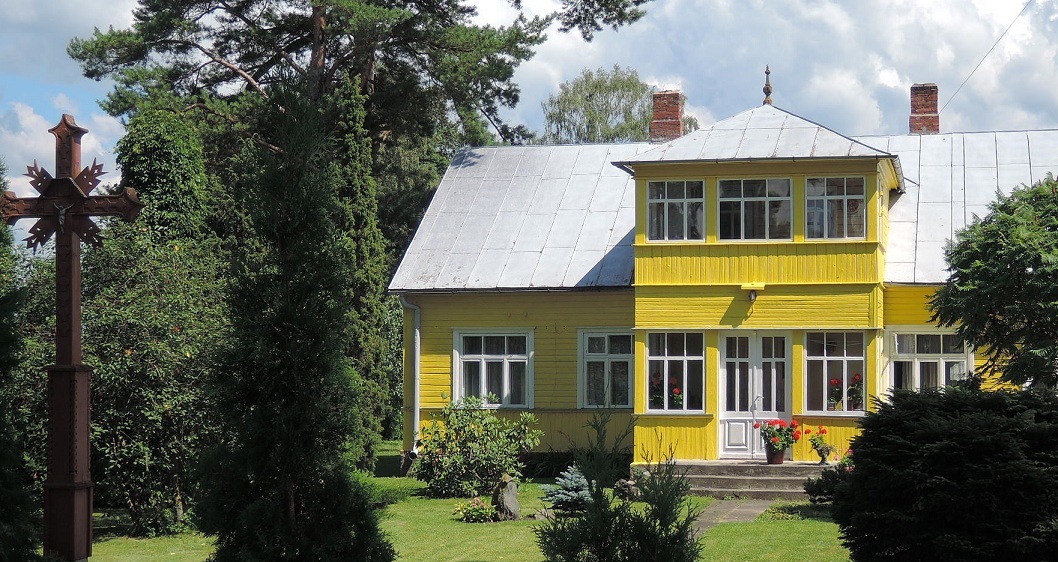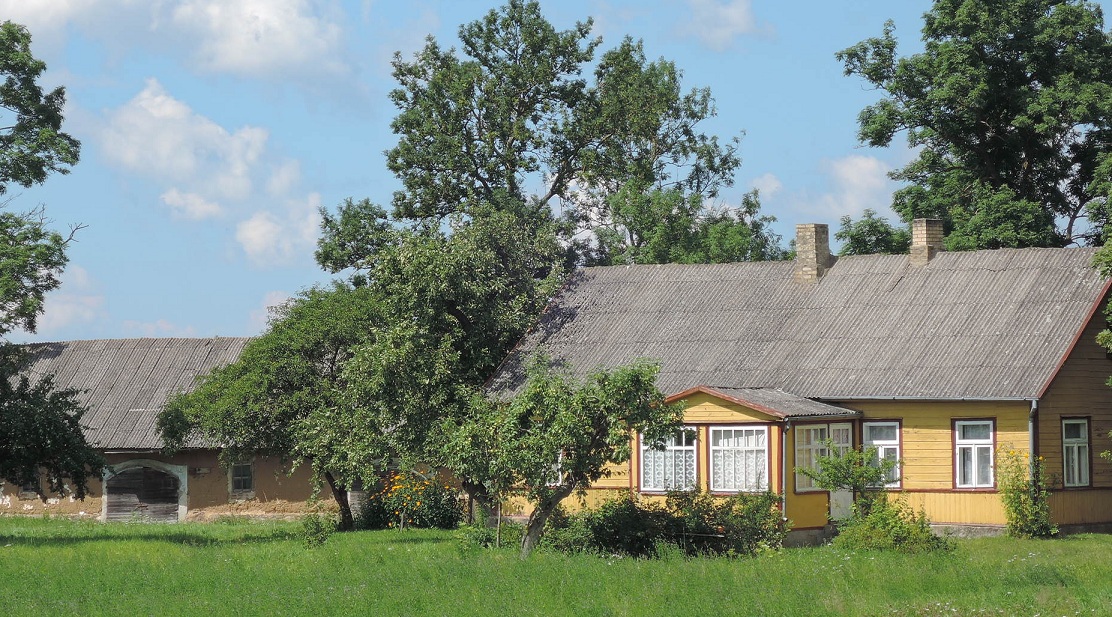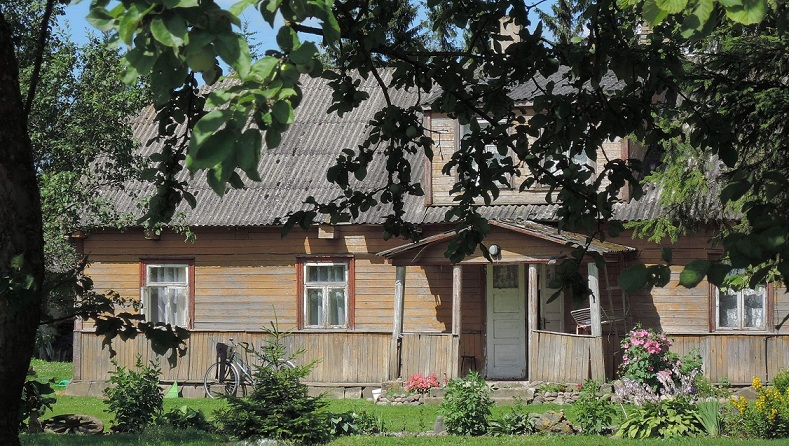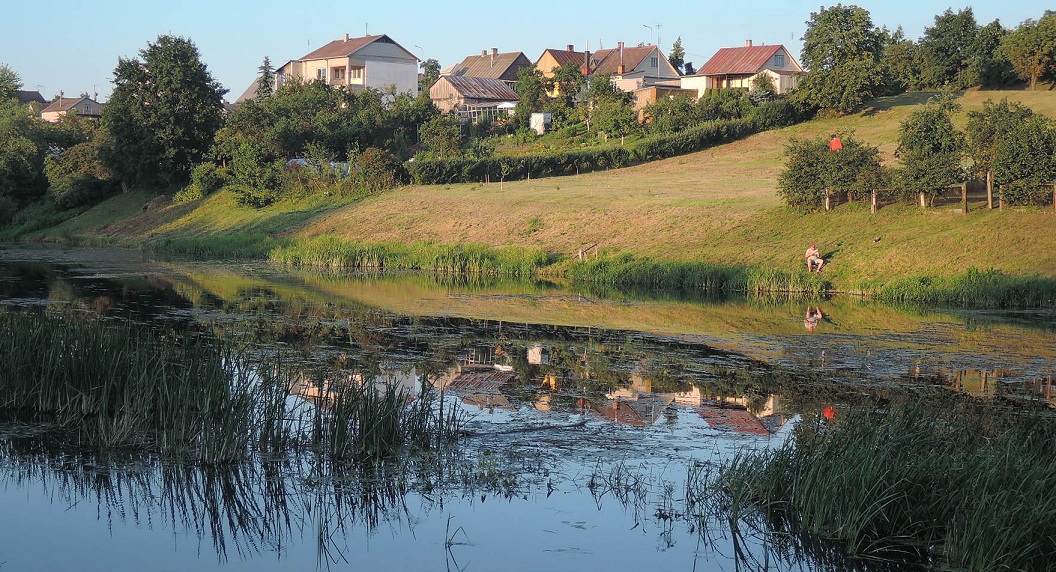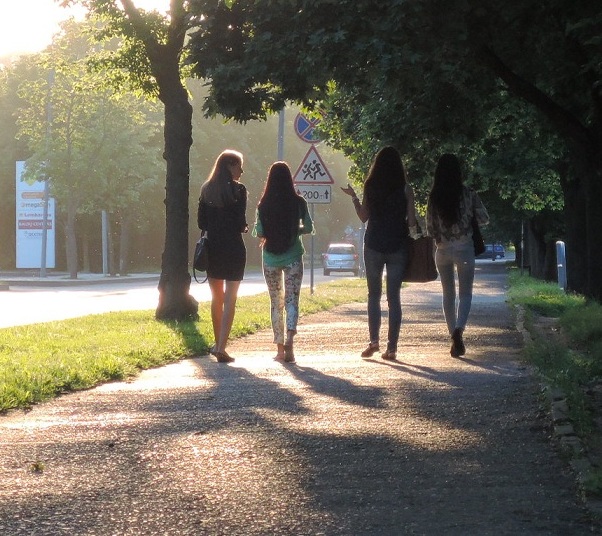It’s been hot and humid for the past few weeks, and I’m riding on a shirt; I know it’s risky, but then… what isn’t? Every day in our lives we’re deciding, mostly without realizing it, which pleasures we’re willing to give up for our safety’s sake? Even with the right garment, isn’t a motorcycle riskier than a car? And the car more dangerous than a bus? And isn’t the latter worse than the train? So on, so forth. The truth is, living is a hazard. But to counter this extra risk, I’m an easy biker; I ride slowly, trying to enjoy the road, the scenery, and stopping every so often to take a photo or just drink a tea in some road café.
In this latitude and time of the year, the dog days, nights’ shortness starts becoming perceptible. Despite being yet quite far from the Arctic Circle — is there where I’m heading? — one can easily notice the sun setting later and rising earlier than back in Spain. Also in the fields the influence of climate and latitude is perceptible: while wheat was already turning yellow one month ago in Castile, it’s only going yellow here these days.
Lithuania, the less septentrional of the Baltic states, is sensibly poorer than Poland; less developed. There is barely any other richness here than primary sectors, and it’s so interesting to see the agricultural machinery they use!, so old you can’t find it in Spain except for museums. Farming houses and other rural buildings are all on wood, outdated but well preserved, beautifully painted, with flowery gardens and ornating trees. This countryside is endearing, though peasants don’t seem hospitable; their distrust is apparent. From the road, I take some shots to one of those nice farms, and two ladies come to me complaining, no photos. They’re highly suspicious regarding cameras, this side of the planet, and they can get quite aggressive.
Generally I find Lithuanians somewhat surly, perhaps not accustomed to foreign, non-slavic tourists.
Since I crossed the South border at Sejny, I’m riding to the north on by-roads, traversing fields, meadows and coppices along a flat as a hand’s palm landscape which centuries back was covered by swamp and still nowadays is very marshy. Avoiding Kaunas, the second largest city in Lithuania, I’ve ended up today in Kedainiai. But all what is lovely, even idyllic, in villages and small towns, becomes uglyness in larger ones like this, where most of the buildings are brick or concrete square blocks of the Soviet style. Only the small historic town is nice, with cobbled streets and old wooden houses.
Talking a walk along this quiet old town I listen, in every restaurant I pass by, some or other group of people talking in Russian. On one hand, the Baltic States are full of Russian tourists and, on the other, 60% of Lithuanians are fluent in Russian. Definitely such language is much more useful than any other, this side of Europe. And it makes me think: in a global world, these strange and minority languages such as Latvian and Lithuanian are doomed to decay. They’re old branches of the Indo-European, not any longer resembling any other, and of no international use whatsoever. What you can do with Lithuanian, you can do with Russian all the same. So, besides these small populations, who else will ever learn them? Even for themselves, Russian is just as useful. Quite the same, by the way, is the doom of Basque, Gaelic and many other tongues.
At the hotelwhere I’m lodged there are two loud North Americans and four louder Poles, as usual a bit drunk and kurwing around. I hear their voices right under my window. A gal, probably a local, tries to conceal her poor English by overdoing the fuckings, the gonnas and the wannas, such a common pattern…
For the rest, Kedainiai seems to be one of those towns full of testosterone, where the preferred amusement for male youth seems to be racing around with a car, revving and screeching the tyres. A flirting method that would have been dropped long ago hadn’t it proven successful, I reckon, with these Soviet style, gorgeous women, oh heavenly women!
At a nearby restaurant, tended by a grim young cute lady, I order some goulash and a bottle of kvas, a fermented rye beverage quite popular in Baltic and Slavic nations. At the table right by mine there’s a foreign couple. I find it odd to come across so many tourists in this small, forsaken town, whose only credit seems to be that it’s one of the country’s oldest.
It’s getting dark. There’s still a lively bunch of customers at the hotel’s terrace and I sit –alone– at a table for a beer. Two foreign couples, tall and blond like elves, climb up the stairs each accompanied by a huge, almost giant dog. Thanks God they’re not the barking type. Eventually people leave the place and finally me too, I go to my room. I read yet for quite a while but, before falling asleep, I have to bear for half an hour the ill-tempered shouts, on the street under my window, of two alpha males who weren’t lucky tonight and want to punish the neighbours for their failure…

